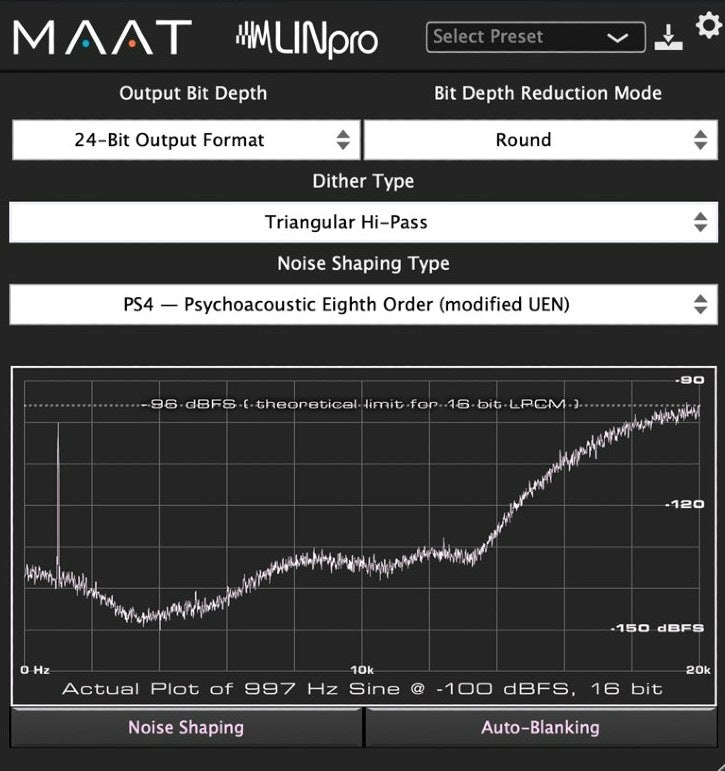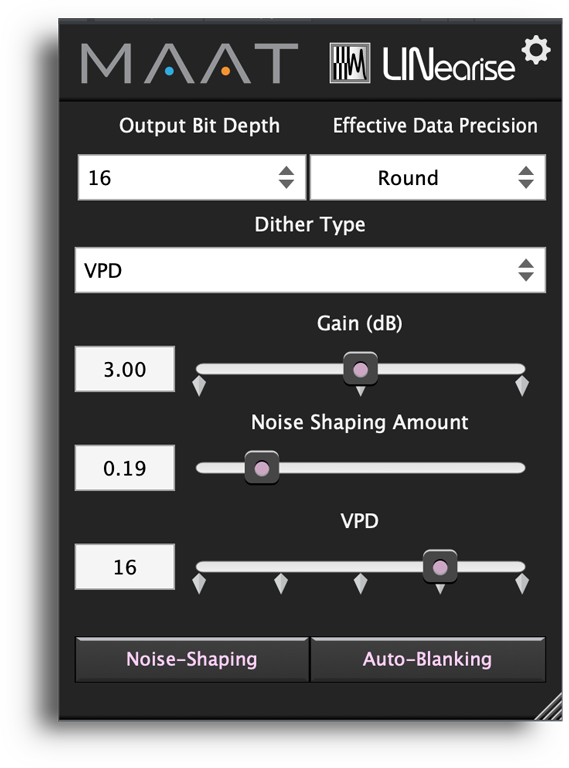Description
-
LINSurround - MAAT's next-generation dithering tool
Your Sound, Your Way
MAAT’s multi-channel LINSurround is your final link between production and delivery. Offering optional word length reduction and seven noise shaping spectra tailored to both analogue and digital delivery of assets, LIN is highly adjustable to help create your own signature “sound.” In addition to TPD and weighted TPD, LINSurround features four newly developed fifth, eighth and ninth order psychoacoustic noise shaping choices. As with all dithering mechanisms, LINSurround must be the very last plugin instance, just prior to converting to the final, fixed-point format.
LINSurroundincorporates the latest advances in auditory and psychoacoustic research. Older, outdated dithering engines rely on decades-old approaches to the problem. MAAT evaluated their original LINearise engine and realized that they could “do it” even better, implementing a more accurate, mathematically superior approach plus new thinking on both the User Experience (UX) and how you want your master to sound. Whether you’re delivering a 16 bit Red Book dupe master, a 24 bit “high res” 88.2k file to today’s higher fidelity streaming services or multichannel 48k stems for video and motion picture surround work, LINSurround will take you there with the best sounding tracks obtainable.
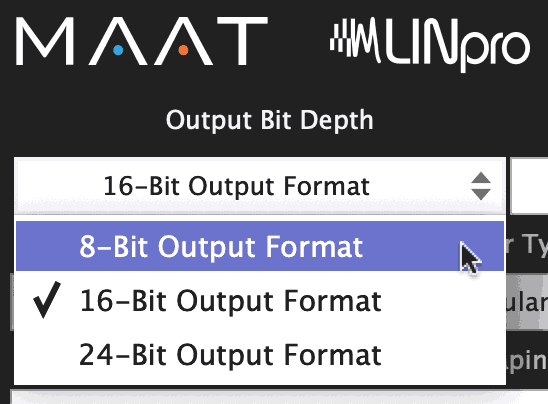
Need More?
LINSurround has it. As you’d expect, automatic muting and variable bit depth, 16 or 24 bits, but also a choice of 8-bit output to instantly hear how your current choice “sounds.” In addition to Triangular Probability Density Function (TPDF) and High Passed TPDF, rectangular dither is also available for educational or experimental exploration.
Rounding performs fundamental linearization, what can be thought of as very low amplitude distortion reduction, by representing all former least significant bits with one single LSB in the resulting word length–reduced version. On the other hand, truncation does not preserve any of that low amplitude information. Instead, it’s just thrown away.
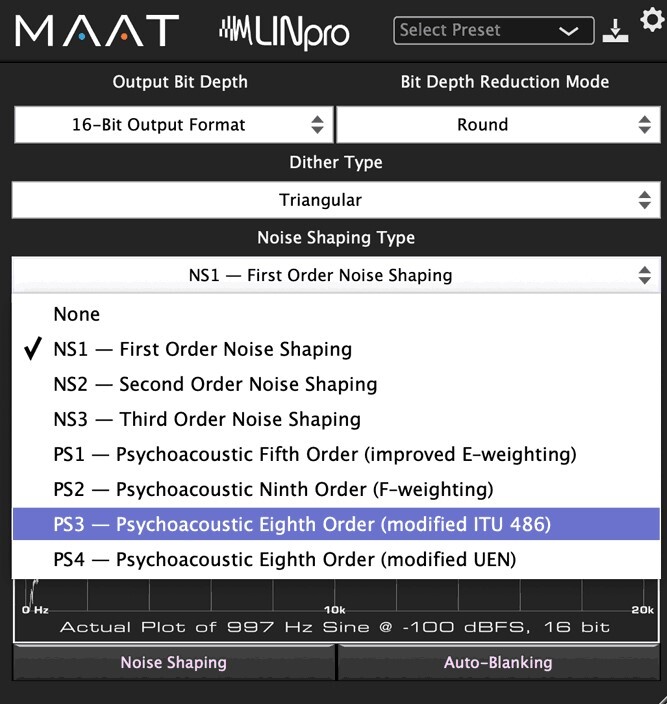
Eyes On It
LINSurround brings visual certainty to the arcane art of dithering. MAAT has included real-world plots of each noise shape for your viewing pleasure. These are not MATLAB simulations, they are actual plots generated by LINSurround's optimized dither engine. Notice that the -100dBFS input signal, that spike at the left side of the plot, is preserved even though the word length has been reduced to 16 bits. A 16–bit word can only encode or store 96dB of dynamic range. Any information quieter than -96dBFS should be lost when reducing the word length to 16 bits. With LIN, up to the 19th bit of the input signal is preserved, embedded in the resulting 16–bit word.
Dither is a fundamental aspect of today’s DAWs. Although not usually thought of as such, re-dithering is important DSP (Digital Signal Processing). In the distant past, much of the pioneering research on dither was performed at Bell Labs. According to information theory, you should add a pinch of noise to your digital audio every time you alter it to keep it distortion-free and to preserve program content by embedding it in the noise floor. That’s dither. Use it to make your digital audio less…“digital!”
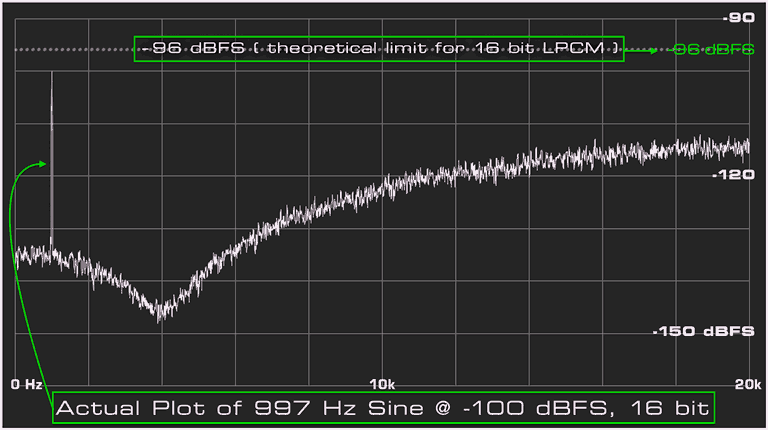
Key Features
Redithering
- Triangular, High Passed Triangular, Rectangular
- Noise Shaping Bypass/Defeat
Word Length Reduction
- 24, 16, 8 Significant Digits
- Round, Truncate
Spectrum & Weighting
- 1st Order Noise Shaping
- 2nd Order Noise Shaping
- 3rd Order Noise Shaping
- 5th Order Noise Shaping (improved E-weighting)
- 8th Order Noise Shaping (modified ITU 486)
- 8th Order Noise Shaping (modified UEN)
- 9th Order Noise Shaping (F-weighting)
Additional Features
- Choice of 7 noise shapes
- Choice of 8, 16 or 24 bit words
- Choice of rounding or truncation
- Choice of TDF, HP TPDF or recatngular dither type
- 4 factory presets speed choice or customization
- Integrated, real-world visual noise shaping plots
- Auto–blanking prevents “background” contamination
- Supports up to 128 channels
System Requirements
Operating Systems
- macOS 10.9 or newer(Universal Binary 2) (64-bit only)
- Windows 7 and newer (32 & 64 bit)
Supported Platforms
- AAX Native (Pro Tools 10.3.10 and newer)
- AU, VST 2, VST 3
- Sample rates from 44.1 to 384 kHz

